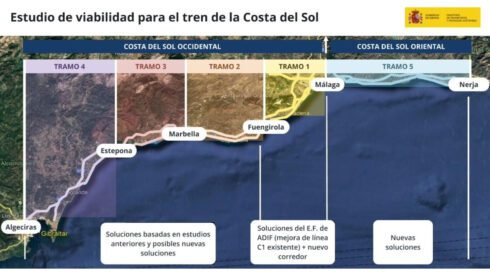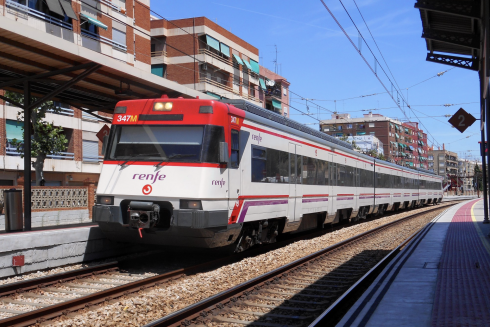SPAIN’S fabled costa train from Nerja to Algeciras is starting to become a more concrete reality – and it may come to Gibraltar.
La Linea Mayor Juan Franco is campaigning for a new stop to be included in the project, which has finally begun.
Madrid has stated that La Linea will only qualify for a stop on the line if there’s ‘enough demand’, with Franco quick to point out that ‘between the two towns we have a population of over 100,000 residents’.
Although still in the preliminary stage, it is envisaged that there will be six stops on the railway: Nerja (22,000 local residents), Malaga (580,000), Fuengirola 85,000, Marbella 160,000, Estepona 70,000 and Algeciras 120,000.

As such, a stop in La Linea would serve more people than half of those – if the Spanish authorities are willing to include the population of Gibraltar in their calculations.
What impact could a new train line across the border have on Gibraltar if it were to be built?
“While clearly a Spanish project, a train would be an incredible opportunity for Gibraltar,” Eran Shy, Director of the Gibraltar Federation of Small Businesses Board, said Olive Press
“There are several ways in which it would be beneficial to our economy. It wouldn’t just speed up the supply chain and reduce waiting times, but it would also boost exports.

The increased mobility of workers on the Spanish side would also make it easier for employers to find employees in Gibraltar, increasing the attractiveness of both sides.
Shay suggests the authorities put on a bus shuttle from the train station to the Gibraltar border. This would make it even easier for commuters, tourists, and shoppers to visit Gibraltar.
The leg between Estepona and Algeciras is forecast to see up to 4.9 million passengers yearly, with potentially 1.5 million stopping in La Linea – or 4,110 a day.
At an estimated cost of €10 million to €20 million per kilometre to build, the final outlay to cover the 50km train line could come to between €500 million to €1 billion.
Some estimates have predicted Gibraltar could see €50 to €100 million in indirect economic gains plus a further 500 to 1,000 new jobs, but at this juncture these are little more than guesses.
Shay said that it was difficult to calculate the economic impact without knowing about the number and time of trains, the proportions of freight to passengers, etc.
“I can’t see any negative impacts on Gibraltar.”
With around four out of every five of the 1.2 million tourists who visit the Rock annually entering from Spain, the boost to tourism from a train to La Linea – or even Algeciras – is obvious.

Edward Macquistan of Gibraltar Chamber of Commerce told this newspaper: “If you have a mass transportation system that brings people down faster and cheaper than the existing options, it could be very beneficial to Gibraltar and La Linea.”
Could the station be inconveniently located far from Gibraltar’s border?
Macquistan said that for them to claim the stop as a La Linea, it would need to be in the middle of town with plenty of room depending on their route.
It’s obvious that a railway will help create jobs.
The environmental lobby is also in favor, as the train will reduce the number of cars that are already clogging up the coastal roads between Malaga and Cadiz.

Macquistan concluded, “I believe most people would be in favor of it.” “The only issue I see is the long-term use of this project.”
He warned against expecting it in the next ten years. The project is in its feasibility phase, with funding still to be secured. The leg from Algeciras to the end of the construction process will probably be the last.
Despite funding issues, the project is clearly in demand, and is likely to result in 60 million annual trips, generating huge economic benefits.
In the long run, a train to La Linea combined with an eventual agreement with Spain and EU could transform Gibraltar.
 Costa News Spain Breaking News | English News in Spain.
Costa News Spain Breaking News | English News in Spain.




